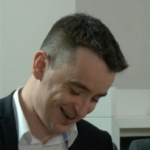Operating on a human body is one of the most daunting and accountable tasks you can carry out. As a result, a new virtual reality system may be a complete game-changer as it offers a new safe and immersive way for trainee surgeons to prepare for the operating room. Virtual reality is most often used for entertainment purposed and to wow users, but this application of virtual reality goes far beyond entertainment and could really aid the effectiveness of surgical training before students have access to real live human beings to operate on.
Training to be a surgeon is an enormous undertaking that consists of many years of studying, watching other people operate in video form, practising techniques on cadavers and fake bodies, and helping out in operating rooms. A study found that over 30 percent of trainee surgeons in the United States cannot perform operations without supervision until they graduate. Virtual reality could offer a new way to learn how to be a surgeon. The CEO of Osso VR, Justin Barad, has created a virtual reality system, Osso, which simulates orthopaedic operations.
The system is made up of a headset and two hand controllers that enable students to carry out virtual surgery on virtual patients with virtual equipment such as knives, drills, nails, screws and hammers. Students can feel the vibration of the drilling through their controllers. Of course, the simulated equipment is not the same as real tools, but VR can provide some sense of operating through the controllers.
Barad tested the system by allowing a group of eight medical students in their first year of study to try out Osso for the first time. In order to test the system and how it compares to the pre-existing preparation to be a surgeon, half of the students used the VR system for a period of 15 minutes, and the rest worked from an instruction manual which provided directions on nailing a metal rod into a shin bone. The students who used the VR as training equipment were more successful and accurate when they were told to repeat the surgery on a plastic model. Therefore, VR has proven to be effective in experiments and, as a result, VR could be a more affordable alternative to established surgical preparation techniques. Barad hopes the technology will offer a less expensive and more effective approach to quickly training students.
This does not mean that the intention is for VR to replace the training already carried out by students where they operate on physical plastic models, the technology should rather be a complementary tool to be used in addition to other ways of learning, to help them prepare for performing actual operations on live people. A common technique for the preparation of medical students for surgery is simulation-based training, which takes place in a hazard free environment.
At the University of Massachusetts Medical School, VR simulation has become a part of third-year medical student training, by simulating different surgical possibilities. The aim of the surgical simulations is to apply knowledge obtained from studying and reading about surgeries and to help bring the surgical scenarios to life without putting real human beings at risk. Medical simulation is the imitation/recreation of real medical situations. The medical situations included are simulated conflicts, medical procedure, and treating the simulation as a real human being with consideration for vital signs and damage that could be caused by mistakes made. Kansas City University is also constructing a VR simulation centre as the medical department wishes to embrace the technology already used at the University of Massachusetts to complement their current training with models and cadavers.
One student explained that the simulation truly feels like you are in a genuine operating room. The simulation features a patient on a surgical table in front of you and you then must collect equipment from around the room in order to perform surgeries. Although models and cadavers offer physical and tangible operating practise, the immersive experience of simulation adds to the overall training experience by bringing the operation and operating environment to the students.
Osso immerses its users in the operating room and confronts them with a realistic looking body to operate on; they are able to operate by moving the hands of the simulated surgeon with hand-held controls, transforming them into fully fledged virtual surgeons for the time they wear the VR headset.
Virtual reality innovations like Osso will likely be further developed and perfected for the training of future surgeons, and if it is made widely useable, students as young as secondary/high school students could have the chance to pick up surgical knowledge and skills without any real human body needed. Virtual reality is likely to be very popular with young technology-minded students as they look for more efficient and engaging ways to learn.
Andrew McLean is the Studio Director at Disruptive Live, a Compare the Cloud brand. He is an experienced leader in the technology industry, with a background in delivering innovative & engaging live events. Andrew has a wealth of experience in producing engaging content, from live shows and webinars to roundtables and panel discussions. He has a passion for helping businesses understand the latest trends and technologies, and how they can be applied to drive growth and innovation.


